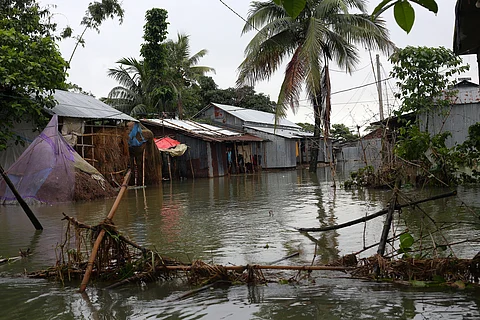

Mozambique, the southeastern African country situated along the Indian Ocean coast, has been hit by a cyclone and normalcy has been thrown out of gear. Cyclone Jude, which is the third cyclone to strike Mozambique this season, was initially identified as a depression on March 14 to the south-west of Diego Garcia in the Indian Ocean.
Over the following days, it intensified into a moderate tropical storm, impacting northern Madagascar on March 15. The storm has been linked to six fatalities and the destruction of 900 houses.
As it moved westwards across the Mozambique Channel, Jude developed into a tropical cyclone, fuelled by sea surface temperatures nearing 30°C, which provided the necessary heat and moisture for its growth.
The cyclone made landfall in Mozambique early morning today, bringing sustained winds of 120km/h and gusts reaching up to 193 kmph, comparable to a Category 1 hurricane. Coastal areas, including Memba, Monapo, Mossuril, Mozambique Island and Nacala, experienced over 200mm of rainfall within 24 hours, causing severe flooding.
Flights were cancelled, and approximately 40,000 people were left without electricity.
Although Jude has since weakened, forecasts suggest it will curve back over the Mozambique Channel, moving eastwards towards southern Madagascar later this week. Some weather models indicate that Jude could regain tropical cyclone strength by the time it reaches Madagascar’s coastline on Friday night, potentially causing further devastation.
Meanwhile, South Africa also experienced intense thunderstorms on March 13, with KwaZulu-Natal province placed on a Level 6 alert for heavy rainfall and flooding. A cold front passing through the region lifted warm air, which rapidly condensed, triggering the storms. Around 100mm of rain fell within 24 hours.